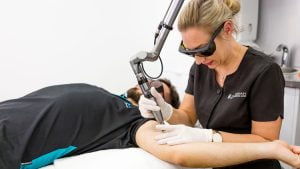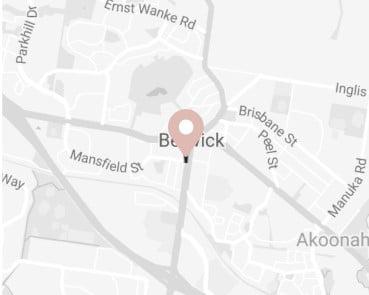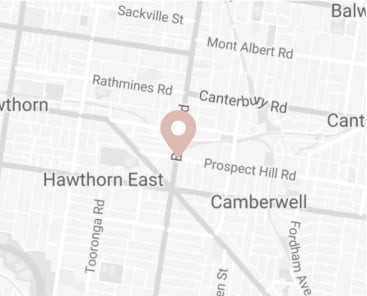Whether you’re looking to get rid of an embarrassing tattoo (no judgement here – we’ve all been there!) or are simply no longer in love with your tattoos, you may be wondering what your options are when it comes to tattoo removal. In 2022, there are numerous options to choose from – from microdermabrasion to surgical removal and more. However, these types of tattoo removal treatments can often be hit or miss which is why we only recommend opting for laser tattoo removal if you are looking for guaranteed results.
At VC Dermal, we specialise in laser tattoo removal that you can count on. Today, we look at everything you need to know about laser tattoo removal, so read on to find out more!
What Is Laser Tattoo Removal?
The majority of experts in the field consider laser removal to be the most successful and cost-effective way to get rid of tattoos. Simply put, laser tattoo removal helps to gradually fade (and eventually entirely eliminate) tattoos from the skin by breaking up the pigment colours with a high-intensity light beam. After the laser removal process, the ink is recognised as waste within the lymphatic system and is eventually discarded by the body through its waste system.
What Type Of Lasers Are Used For Tattoo Removal?
At Victorian Cosmetic Dermal Clinics Melbourne, we prioritise only using the best of the best. As such, we use medical grade lasers including the Bluecore Iris Q-switch Nd: YAG Laser (532nm/1064nm/SLP/PTP BlueToning) and the Medlite C6 Q-switched YAG Laser to safely and effectively remove unwanted tattoos.
Unlike many other laser devices, the unique configuration settings on these particular laser removal devices allow us to treat not just black ink, but also other colours including most colours blue, green, red and more.
Are Laser Tattoo Removal Results Instant?
Unfortunately, there are no tattoo removal treatments that offer instant results. In most cases, it may take anywhere between 2 – 8 sessions to remove or fully fade a tattoo, depending on its size, colour and age. Treatments will need to be spaced at least 8 weeks apart to maximise the results of each tattoo removal session and to allow for sufficient skin healing.
Is Laser Tattoo Removal Painful?
You can rest easy knowing that laser tattoo removal will probably hurt less than it did when you first got your tattoo. Before your session, you can apply a topical anaesthetic cream to the treatment area (which you must supply yourself). This will numb your skin to ensure that any pain experienced is minimal. Many of our clients describe the experience as being similar to a warm elastic band being flicked onto the skin. Additionally, a thermal cooling device that uses cold air over the skin is used during treatment.
Our dedicated team of therapists at VC Dermal Clinics Melbourne take the time and care to ensure that every patient has the most comfortable experience ever.
What To Expect After Laser Tattoo Removal
Immediately after your laser tattoo removal session, the targeted areas will feel tender and sensitive to touch due to swelling and blistering thereafter. Thankfully, it should take no longer than two weeks for all of these responses to treatment to subside. You may also notice that the skin on your tattoo appears white and chalky (frosting). This is due to carbon dioxide being released from the skin and is a totally normal part of the laser tattoo removal healing process.

What Is The Laser Tattoo Removal Healing Process?
Immediately After Treatment: You can expect frosting to occur and last for about 30 minutes. On and around the treated area, you may experience redness, swelling, bruising and sensitivity.
The First 3 Days: If you do not notice any blisters after laser treatment, you can at this point remove your non-stick dressing. You may experience itching, but it is vital that you avoid scratching or rubbing your skin.
The First Week: After the first week, you might still experience redness and swelling, and this is completely normal. Avoid letting blisters pop – instead, allow the blisters to go down and dry out naturally and form scabs. The scabbing process is important to reduce the risk of bacteria entering and causing infection.
Second Week Onwards: You can expect symptoms to become milder at this point. You might notice the treated skin looking darker as the tattoo pigment rises to its surface. The area around treated skin may also appear to be lighter or darker – a symptom that is entirely normal and will fade with time. Most importantly, continue the aftercare as instructed.
Do note that people heal at different rates and there is no definite answer when it comes to exactly how long it will take for your skin to heal. With recovery period in mind, your therapist will recommend a laser tattoo removal treatment schedule during your initial consultation.
Tattoo Removal Aftercare
Aftercare is possibly one of the most important factors that will contribute to successful laser tattoo removal. The more disciplined you are with your aftercare, the faster you will heal. Your therapist will provide a personalised aftercare plan and it is important that you:
- Keep your non-stick dressing in place for the first 24-48 hours after treatment.
- Reapply ointment (Bepanthen) as instructed by your therapist;
- Drink plenty of water to keep hydrated;
- Avid picking, rubbing or scratching the area;
- Apply at least SPF 30+ daily to skin areas exposed to sun.
- Keep treated skin away from direct sun;
- Avoid using harsh skincare products such as exfoliators; and
- Do not soak the area when showering.
__________
Looking For The Best Laser Tattoo Removal In Melbourne?
Look no further than Victorian Cosmetic Dermal Clinics. We offer safe and effective laser tattoo removal using only the best medical grade lasers. Our dedicated team of staff have both aesthetic medical qualifications and are laser safety certified for tattoo removal. Check out more of our success stories in the link below.
Check out our Before & After photos
Ready to say goodbye to an unsightly tattoo? Contact us today to book your initial consultation.




